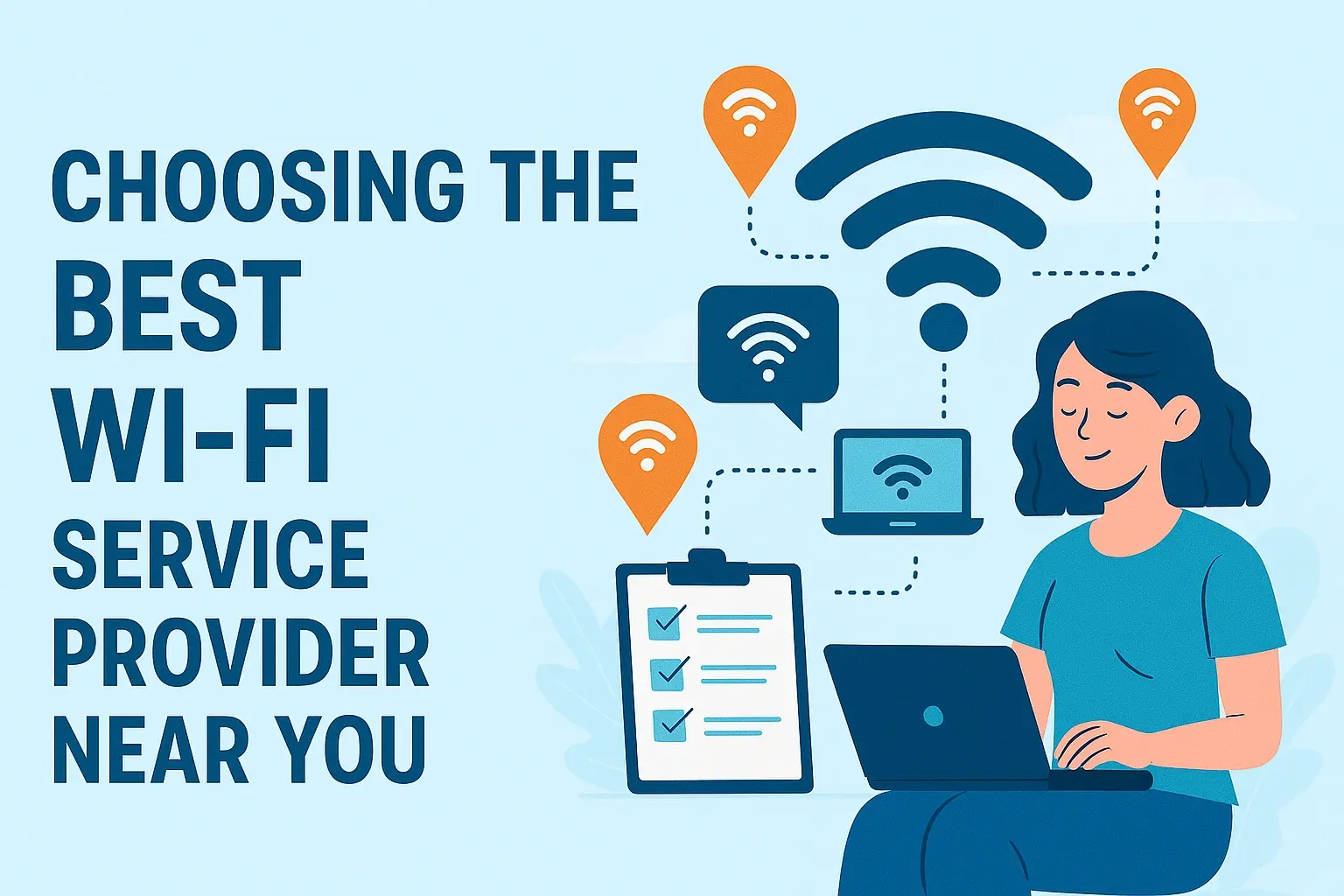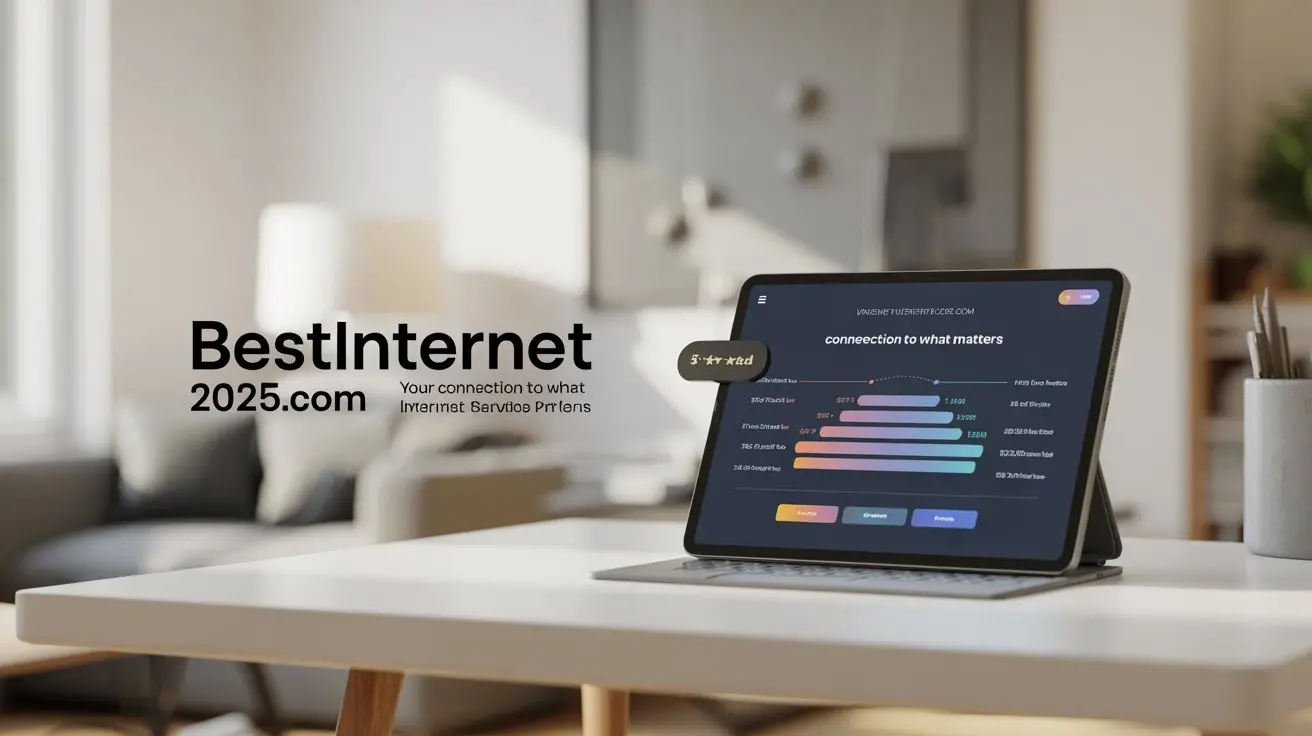How to Choose an Internet Service Provider ?

Selecting the right internet service provider (ISP) is a critical decision that impacts your daily life, whether you’re browsing the web, streaming movies, working from home, or gaming. With numerous options available, the process can feel overwhelming. However, by breaking it down into manageable steps and considering key factors, you can make an informed choice that meets your needs and budget.
This guide provides a detailed roadmap to help you choose the best ISP for your home.
1. Assess Your Internet Needs
Before exploring providers, understand your household’s internet requirements:
Number of Devices: Count the devices (smartphones, laptops, tablets, smart TVs, etc.) that will connect simultaneously. A household with 1–2 devices may need 150–300 Mbps, while over 10 devices might require 500 Mbps or more.
Usage Type: Identify your primary activities:
Basic browsing and email: 25–50 Mbps
Streaming HD videos: 50–100 Mbps
4K streaming or online gaming: 200–500 Mbps
Heavy usage (e.g., video conferencing, large file downloads): 500 Mbps or more
Speed Testing: If you’re switching providers, test your current speed using tools like Ookla Speedtest to establish a baseline for comparison.
2. Check Availability in Your Area
Not all ISPs are available everywhere, particularly in rural areas. Use zip code checkers on provider websites, such as HighSpeedInternet.com, to identify available providers. Key considerations:
Urban areas often have multiple options, including fiber, cable, and 5G.
Rural areas may be limited to satellite or DSL, which can be slower and more expensive.
Prices and plans may vary by location, so confirm details for your specific address.
3. Understand Different Internet Connection Types
Each connection type has unique strengths and limitations. Here’s a breakdown:
|
Connection Type |
Speed Range |
Pros |
Cons |
Best For |
|---|---|---|---|---|
|
300–5,000 Mbps |
Fast, symmetrical speeds, reliable |
Limited availability |
Heavy users, gamers, and remote workers |
|
|
100–1,000 Mbps |
Widely available, good speeds |
Slower upload speeds |
Most households |
|
|
10–100 Mbps |
Budget-friendly, uses phone lines |
Slower, less reliable |
Basic browsing |
|
|
25–100 Mbps |
Available in rural areas |
Expensive data caps, latency |
Rural users with no other options |
|
|
72–1,000 Mbps |
High speeds, no cables needed |
Signal-dependent, limited availability |
Urban/suburban users with 5G access |
-
Fiber: Offers symmetrical upload and download speeds (e.g., Verizon’s 300–2,300 Mbps). Ideal for heavy users but not widely available.
-
Cable: Common providers like Spectrum offer speeds up to 1,000 Mbps, though upload speeds are slower.
-
DSL: Uses existing telephone lines, making it affordable but slower and less reliable.
-
Satellite: Suitable for rural areas but often comes with high costs, data caps, and latency issues.
-
5G/Fixed Wireless: Emerging providers like Verizon and T-Mobile offer speeds up to 1,000 Mbps, depending on signal strength.
4. Compare Plans and Prices
Carefully compare plans to ensure you’re getting value for your money:
-
Monthly Cost: Look beyond introductory rates, as prices often increase after a promotional period (e.g., Xfinity’s $55 plan may rise to $89 after a year).
-
Hidden Fees: Watch for installation fees, equipment rentals ($10–$15/month), maintenance fees, or data overage charges.
-
Data Caps: Some plans have limits (e.g., Sparklight’s 5TB soft cap). Prefer unlimited plans or those with at least 1 TB/month for heavy users.
-
Bundling Options: Providers like Astound or Mediacom may offer discounts when bundling internet with TV or phone services. Ensure you need these services to justify the cost.
-
Cost per Mbps: Divide the monthly rate by the maximum speed to compare values. Aim for 10–25 cents per Mbps or lower. For example:
-
AT&T Fiber: 5,000 Mbps at $245/month = 5 cents/Mbps
-
Spectrum: 500 Mbps at $50–$80/month = 10–16 cents/Mbps
-
5. Evaluate Customer Service and Reliability
A reliable connection and responsive customer service are essential, especially for work-from-home setups:
-
Reliability: Look for providers with consistent uptime and minimal outages. Check reviews specific to your area, as service quality varies.
-
Customer Support: Read reviews on platforms like Reddit or the Better Business Bureau. Providers like Metronet or T-Mobile Home Internet often receive positive feedback for their support.
-
Tech Support: Opt for providers offering free tech support for outages or equipment issues.
6. Consider Special Features and Add-Ons
Some ISPs offer perks that enhance your experience:
-
Free Equipment: Check if the provider includes a wireless router or modem, or if you must rent or buy one.
-
Additional Services: Look for extras like online backup, website hosting, antivirus software, or Wi-Fi hotspot access.
-
Buying Your Router: Purchasing a router (~$200) can save $10–$15/month in rental fees and may improve performance. Brands like TP-Link, Netgear, and Linksys are reliable options.
7. Be Wary of Contracts and Promotional Tricks
-
Contracts: Avoid long-term contracts to prevent early termination fees (e.g., $100–$200). Providers like Earthlink or T-Mobile Home Internet offer no-contract plans.
-
Promotional Pricing: Introductory rates often increase after 12 months. Check the regular price in the terms of service.
-
FCC Broadband Nutrition Labels: These provide standardized details on price, speed, and fees, making comparisons easier.
8. Look for Deals and Promotions
Promotions can save money, but come with caveats:
-
Examples include T-Mobile’s $300 gift card or Frontier Fiber’s 500 Mbps for $30/month.
-
Always check the terms to understand price hikes after the promotional period.
9. Test Your Current Speed
If switching providers, test your current speed to establish a baseline. This ensures the new provider meets advertised speeds. Use tools like:
-
Ookla Speedtest
-
Apple or Android speed test apps
10. Make an Informed Decision
Weigh all factors—availability, speed, price, reliability, and customer service. If possible, start with a no-contract plan to test the service before committing long-term. Providers like Verizon 5G Home Internet or Google Fiber are often praised for transparent pricing and reliability.
Conclusion
Choosing an ISP involves balancing multiple factors to find the best fit for your needs. By assessing your usage, checking availability, understanding connection types, comparing costs, and evaluating reliability, you can select a provider that offers value and performance. Take your time, read the fine print, and don’t hesitate to ask providers about deals or terms. With the right ISP, you’ll enjoy a seamless internet experience tailored to your lifestyle.
Faq
How do I know what internet speed I need?
Basic browsing/email: 25–50 Mbps HD streaming or light gaming: 50–100 Mbps 4K streaming or online gaming: 200–500 Mbps Heavy usage (e.g., multiple users, video conferencing): 500 Mbps or more
How can I find out which ISPs are available in my area?
Enter your zip code on provider websites or use comparison tools like Ctvforme.com. Availability varies by location, with urban areas offering more options (fiber, cable) and rural areas often limited to DSL or satellite.
What’s the difference between fiber, cable, and DSL?
Fiber: Fastest (300–5,000 Mbps), symmetrical speeds, reliable but less available. Best for heavy users. Cable: Common, offers 100–1,000 Mbps, but upload speeds are slower. Good for most households. DSL: Uses phone lines, 10–100 Mbps, affordable but slower. Suitable for basic needs. For more details, see the connection type table in the main guide.
Are there ways to avoid hidden fees?
Yes, look for: Providers with transparent pricing (e.g., FCC Broadband Nutrition Labels). Plans with no equipment rental fees or buy your own router (~$200) to save $10–$15/month. Unlimited data plans to avoid overage charges. Always read the fine print for installation or maintenance fees.





